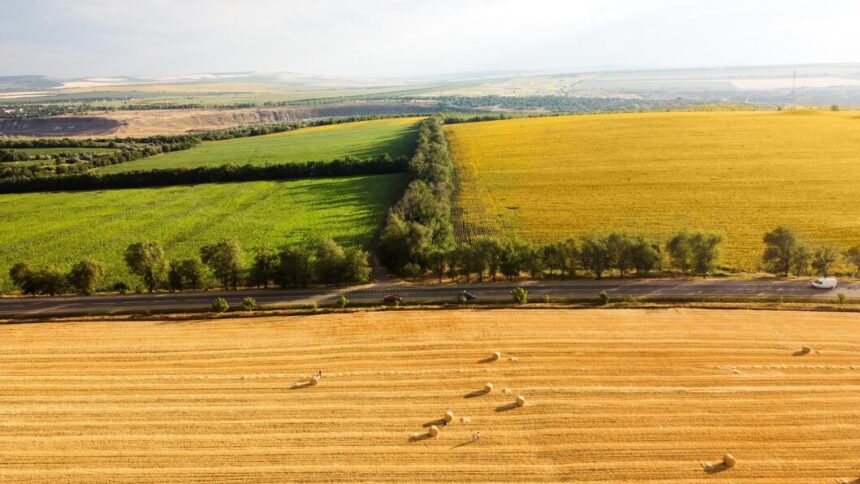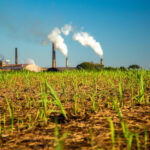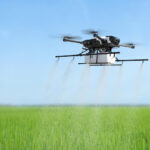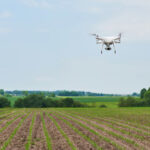South African farmers face various challenges when it comes to protecting their crops, with wind damage being one of the most common. Strong winds can erode soil, dry out crops, damage plants, and reduce yields. Windbreaks, also known as shelterbelts, are an effective solution to mitigate these risks by providing a physical barrier that slows down wind and creates a more stable microclimate for crops. This guide will explain the benefits of windbreaks and provide practical advice on setting them up on your farm.
1. The Importance of Windbreaks
Windbreaks offer multiple advantages to South African farmers:
- Reduce Wind Speed: Windbreaks reduce wind velocity, protecting crops from physical damage and preventing the loss of moisture through evaporation.
- Prevent Soil Erosion: By slowing down wind, windbreaks help prevent soil erosion, keeping the topsoil in place and ensuring healthy growing conditions.
- Increase Yields: Crops grown in protected environments benefit from improved growth rates, reduced water stress, and better overall health, often leading to higher yields.
- Protect Infrastructure: Windbreaks can shield farm buildings, irrigation systems, and other infrastructure from wind damage.
2. Choosing the Right Location
The placement of windbreaks is crucial for maximum effectiveness.
- Direction of Prevailing Winds: In South Africa, windbreaks should be positioned perpendicular to the prevailing winds. For instance, in regions where winds commonly blow from the south or west, the windbreak should run east to west or north to south.
- Distance Between Windbreaks and Crops: The optimal distance between windbreaks and the protected crops depends on the height of the windbreak. As a general rule, the windbreak will protect an area up to 10 to 15 times its height. For example, a 5-meter-high windbreak will protect crops located up to 50–75 meters away.
- Avoid Shading Crops: Ensure that windbreaks do not cast excessive shade on crops, as this could affect their growth. Plant them far enough away from sun-sensitive crops or opt for species that allow sunlight to filter through.
3. Types of Windbreaks
There are two main types of windbreaks: natural (living windbreaks) and artificial (constructed windbreaks).
Natural Windbreaks (Living Windbreaks)
Natural windbreaks consist of trees, shrubs, or grasses planted in rows to create a barrier.
- Tree Species: When choosing tree species for your windbreak, it’s important to consider local climate and soil conditions. In South Africa, popular choices include:
- Acacia Karroo (Sweet Thorn): A native tree that grows quickly and is drought-resistant, making it ideal for dry regions.
- Eucalyptus spp.: Fast-growing, dense trees commonly used for windbreaks but should be managed carefully due to their water demands.
- Casuarina (Beefwood): Known for its tall, dense growth, which effectively reduces wind speed.
- Shrubs and Bushes: Adding a layer of shrubs underneath taller trees increases the density of the windbreak. Suitable shrubs include Carissa macrocarpa (Num-num) and Rhigozum obovatum.
- Spacing: When planting trees for windbreaks, space them according to their mature size. Rows of trees should be 2–4 meters apart, while trees in a row should be spaced 1–3 meters apart, depending on the species.
- Maintenance: Natural windbreaks require regular maintenance, including pruning and trimming to maintain density and health. Remove dead branches and replace trees that have died.
Artificial Windbreaks
Artificial windbreaks consist of constructed barriers made from materials such as wood, plastic, or netting.
- Advantages: These barriers can be installed quickly and are adjustable to fit specific requirements. They are useful for immediate protection while waiting for trees in natural windbreaks to mature.
- Types: Windbreak nets or screens made from UV-stabilized polyethylene are commonly used in areas where trees are not suitable or cannot grow quickly enough. These nets allow some wind to pass through, reducing wind speed without creating turbulence.
- Installation: Artificial windbreaks should be installed firmly in the ground and positioned to face the prevailing winds. They typically range in height from 2 to 5 meters, depending on the needs of the farm.
4. Best Practices for Windbreak Effectiveness
- Porosity: The porosity of a windbreak (the amount of space between trees or netting) is important. A windbreak that blocks 50-60% of the wind is ideal, as it reduces wind speed without causing turbulence on the leeward side. Solid barriers may create wind turbulence, which can be harmful to crops.
- Multiple Rows: For maximum protection, plant windbreaks in multiple rows. Two or three rows of trees and shrubs provide better wind resistance than a single row.
- Diversity: Mixing different species in a windbreak can improve its effectiveness and reduce the risk of pests and diseases that may affect a single species.
5. Preventing Pest and Disease Problems
Windbreaks, particularly living ones, can sometimes attract pests or become a vector for plant diseases. Here are a few ways to prevent these issues:
- Monitor Regularly: Inspect your windbreak trees and shrubs regularly for signs of pests, such as aphids, borers, or fungal infections.
- Use Resistant Species: Opt for tree and shrub species that are resistant to common pests and diseases in your area.
- Pruning: Regularly prune trees and shrubs to remove diseased or infested branches, and encourage airflow to prevent fungal diseases.
6. Long-Term Maintenance
A windbreak is an investment that will serve your farm for many years if properly maintained.
- Replanting: As trees age, they may die or lose their effectiveness. Replant trees and shrubs as needed to ensure the windbreak remains effective.
- Fertilization and Irrigation: Provide adequate nutrition and water to young windbreak trees and shrubs to ensure rapid growth, especially in the first few years. Mulching can help retain soil moisture and reduce competition from weeds.
7. Windbreaks and Wildlife
Windbreaks can provide additional benefits by creating habitats for birds and beneficial insects. These wildlife species can help control crop pests naturally, contributing to an integrated pest management system on your farm.
Windbreaks are a valuable asset for South African farmers looking to protect their crops from wind damage, reduce soil erosion, and improve overall farm productivity. Whether opting for natural or artificial windbreaks, careful planning, proper species selection, and regular maintenance are key to ensuring the windbreak’s effectiveness. By setting up a well-designed windbreak, farmers can create a more stable and productive growing environment for their crops, leading to better yields and long-term sustainability.







